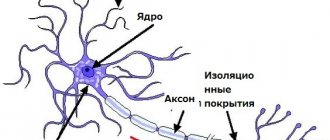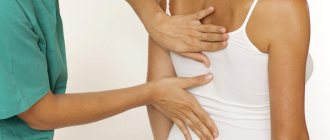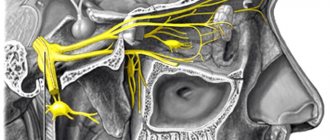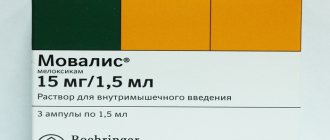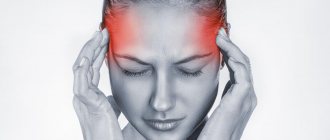The complex of symptoms characteristic of acute circulatory disorders in limited areas of the body is called Raynaud's syndrome. The frequency of the syndrome is higher in countries with cold climates. It fluctuates approximately between 2 and 18%. The disease most often affects middle-aged people (40 - 50 years old), especially women (4 times more often than men).
The manifestations of Raynaud's disease and the symptoms of Raynaud's syndrome are very similar to each other. However, they differ in the cause that prompted their occurrence, and sometimes in their localization. Differential diagnosis is of great importance in the choice of treatment methods.
Causes
Raynaud's syndrome refers to connective tissue pathologies and is paroxysmal, paroxysmal in nature. In medicine, there is the concept of “Raynaud’s phenomenon,” which includes not only the syndrome of the same name, but also Raynaud’s disease. The difference between the pathologies is significant: if the syndrome appears against the background of other diseases, the disease is primary in nature.
With Raynaud's disease (angiotrophoneurosis), there is a symmetrical decrease in blood flow in the lower extremities and hands. The exact reasons for the development of the pathology are unknown, but more often the anomaly occurs after exposure to the following risk factors:
- suffered stress;
- nervous tension;
- severe hypothermia;
- taking vasoconstrictor drugs;
- caffeine abuse.
The disease often develops in people living in cold climates. There is a clear connection between psychosomatics and Raynaud's disease - disturbances in arterial blood flow appear in those suffering from neuroses and depressive conditions. Heredity plays an important role in the mechanism of the onset of the disease - 30% of close relatives of patients are diagnosed with Raynaud's disease.
Raynaud's syndrome is a secondary pathology that occurs against the background of existing diseases. Typically, the causes of the syndrome are very serious and represent systemic connective tissue diseases:
- systemic scleroderma;
- vasculitis;
- systemic lupus erythematosus;
- dermatomyositis;
- periarteritis nodosa.
The cause may be rheumatism, ganglionitis, aneurysms of the vascular system, thyrotoxicosis, arteritis, cryoglobulinemia, compression of nerves in the neck, atherosclerosis of the upper or lower extremities. There is occupational Raynaud's syndrome, when attacks occur due to the influence of occupational hazards (hypothermia, vibration, polyvinyl chloride poisoning).
Treatment of Raynaud's syndrome
The disease and Raynaud's syndrome are treated with completely different methods, which is why it is so important to correctly determine which Raynaud's phenomenon has developed in the patient - primary or secondary.
The first stage of treatment for the syndrome is aimed at eliminating all provoking factors - domestic and industrial, in particular vibration, cooling and smoking. Next, the person is prescribed a full range of examinations to identify the primary disease that caused the development of this pathology. After this, the primary task in the treatment of Raynaud's syndrome becomes treatment of the underlying disease.
To prevent the unpleasant symptoms characteristic of this disease, patients can be prescribed vasodilators, selective HS2-serotonin receptor blockers, ACE inhibitors, antiplatelet medications, etc.
Physiotherapy and massage are recommended for all patients.
Progression or resistance of the pathology to drug therapy is an indication for surgical ganglionectomy or sympathectomy.
Classification and stages of the disease
According to the classification, there is a primary form of pathology (Raynaud's disease) and a secondary form (Raynaud's syndrome). There are different stages of pathology as they develop:
- First (angiospastic) stage. A person periodically experiences short-term vascular spasms that last several minutes. After the attack is over, no consequences are observed. Usually the violations concern the first - third fingers of the hand, and a little less often - the first - second toes.
- Second (angioparalytic) stage. The disease begins to progress, so attacks become more frequent and may occur for no reason. Their duration increases to an hour or more.
- Third (atrophoparalytic) stage. Due to regular attacks, the skin undergoes serious trophic disorders, and the blood supply to tissues is disrupted. There is a risk of complications, including gangrene.
Features of the diagnosis of Raynaud's syndrome
In order to prescribe the correct treatment, it is very important to distinguish between the disease and Raynaud's syndrome. The patient is examined by a rheumatologist and a vascular surgeon.
Angiography helps to detect changes in the distal parts of the arteries. With its help, areas of total vascular obstruction, areas of uneven stenosis, or the absence of collaterals and capillary networks are identified.
The nail bed and the anterior surface of the eye are examined using capillaroscopy - it allows one to detect morphological changes in the microvascular pattern, which indicates a violation of perfusion.
Laser Doppler flowmetry is prescribed to assess peripheral microcirculation. With its help, it is possible to identify defects in myogenic and metabolic regulation of blood circulation, and detect a decrease in sympathetic activity and veno-arterial reactions.
Also, between attacks of Raynaud's syndrome, patients undergo a so-called cold test to provoke vasospasm, during which it is possible to assess the state of blood flow.
Symptoms of pathology
The most initial symptoms in children, women or men are a periodic feeling of chilly fingers, which may occur even before the onset of real attacks.
Further, at the first stage of the disease, the following signs appear:
- short-term numbness of the skin;
- fingers become white and cold;
- aches and pain appear;
- There are elements of paresthesia - impaired sensitivity of the fingers.
An attack in the first stage can be triggered by washing your hands with cold water, smoking, washing your face or body, or stress. Upon completion of the paroxysm, all signs disappear without a trace. In rare cases, the process involves the earlobes and the tip of the nose.
Later, the frequency of attacks becomes higher and the severity is stronger. Pain in the fingers and toes increases. According to the description of the second stage, a prolonged spasm of blood vessels is recorded - the skin gradually acquires a red-violet hue, and as the attacks end, a vascular pattern is clearly visible on it.
Symptoms at the last stage:
- dystrophy of the skin and nails;
- the appearance of scars;
- swelling, cyanosis of the skin after attacks;
- the appearance of blisters with bloody contents;
- the formation of ulcers and areas of dead skin.
The duration of the disease for the first - second stages usually does not exceed 5 years. With Raynaud's syndrome, the pathology reaches severe consequences less often than with Raynaud's disease.
An unconventional approach to treating Raynaud's disease
First of all, patients diagnosed with Raynaud's syndrome are recommended to massage the affected areas - fingers, arms, lower limbs. Massaging movements should begin from the fingertips, gradually moving to the shoulder. The movements should be smooth - you can stroke the skin, rub, pinch, pat. This massage should be carried out for at least 2 weeks for 10 minutes. After this, you need to take a break for 1 week and then repeat the course again. If the clinical symptoms of the disease extend to the earlobes, then they also need to be massaged, stroked and rubbed.
To make the treatment even more effective, massage can be carried out by first moistening your hands with massage oil and adding a few drops of essential oil of mint, anise, motherwort or yarrow. These oils have an antispasmodic and analgesic effect.
Hot baths with the addition of a decoction of herbs - motherwort, valerian root, dill inflorescences, yarrow - have proven themselves well. You can also add a few drops of the essential oils listed above to the water. The duration of the therapeutic bath is 15 minutes, and the water temperature should not exceed 39-40 degrees. During this time, the patient warms up properly, the blood supply to small blood vessels increases, and the heartbeat quickens.
Instead of a bath, you can try soaks. They are prepared in the same way as a medicinal bath, only they dip their hands or feet in water. It is important to monitor the temperature of the water - you should not keep your limbs in the bath after the water has cooled. Not only will this not be beneficial, but it may also worsen Raynaud's attacks.
Complications
The consequences of prolonged vascular spasm are always unpleasant. In addition to the fact that symptoms always intensify over time, severe pain appears, there is a risk of developing trophic disorders:
- scarring;
- nail dystrophy;
- finger deformities;
- the appearance of gangrene;
- muscle damage;
- bone resorption.
In some cases, Raynaud's disease reverses its progression. It can go away spontaneously after pregnancy and childbirth, during menopause, and generally for no apparent reason. Stages 1–2 of the disease do not pose a threat to life and health, but stage 3 can already cause the loss of a limb. The patient’s quality of life suffers greatly, the person cannot occupy certain positions, perform work related to fine motor skills, or exposure to the cold.
Symptoms of the disease
Due to a disruption in the functioning of the central nervous system, in the area of the arms, less often the legs, the tip of the nose or lips, the earlobe - a spasm of small blood vessels (arterioles) occurs, the capillaries do not fill with blood and the skin tissue becomes very pale and cold, as with frostbite.
Most often this manifests itself on the fingers, the attack lasts about 3-4 minutes, then passes, and the fingers become bright red. The spasm occurs symmetrically on both hands, at this time swelling of the joints, numbness and pain may be observed, the condition returns to normal within half an hour.
An attack of Raynaud's is accompanied by headaches, dizziness, and increased blood pressure.
Having discovered these symptoms, you must immediately consult a doctor, because the disease will not go away on its own, but will develop over time and acquire signs of the following stages: the second and third, and will ultimately lead to necrosis (death) of the affected limbs and infectious complications.
Diagnosis of pathology
To prescribe the correct treatment, it is important to make a differential diagnosis between the syndrome and Raynaud's disease. Elimination of risk factors and impact on systemic diseases in Raynaud's syndrome lead to regression of the pathology, so diagnosis will include a search for causes.
Examination methods prescribed by a rheumatologist may be as follows:
- General blood analysis. An elevated ESR is detected, which most often means the presence of systemic rheumatic diseases. Anemia may be observed (a drop in hemoglobin and red blood cells); in some cases, leukocytes and platelets drop.
- Biochemistry. Total protein increases, and with lupus erythematosus the level of fibrinogen increases. AST, ALT, aldolase, and creatine phosphokinase are often elevated.
- Coagulogram. Due to a decrease in the number of platelets, blood clotting decreases.
- Immunoglobulins. Specific indicators increase in autoimmune diseases - rheumatoid arthritis, lupus erythematosus and others.
- Antibodies. With autoimmune causes of Raynaud's syndrome, special antibodies appear in the blood - antinuclear and anticentromere.
Reasons for the development of the disease
Doctors cannot name the exact reasons for the development of Raynaud's disease. It is known that women are 5 times more prone to this pathology than men. It is believed that the disease occurs as a result of spasm of small vessels - capillaries. Most often, such a spasm is caused by general hypothermia of the body.
In countries with cold climates, the disease is much more common than in southern regions. Much less commonly, Raynaud's disease can be caused by pathologies such as diabetes mellitus, lupus erythematosus, rheumatoid arthritis, and spinal diseases. Sometimes occupational factors, such as vibration or constant psycho-emotional stress, can be a predisposing factor to the development of Raynaud's syndrome.
If we are talking about an independent disease, then doctors diagnose “Raynaud’s disease”, and when this pathology is accompanied by other disorders in the body listed above, then they speak of “Raynaud’s syndrome”. In both cases, the features of the course of the disease and its clinical symptoms are almost the same.
Remember that Raynaud's disease should not be left to chance and its clinical manifestations should not be ignored. This can lead to chronic circulatory problems in the limbs, which often ends in gangrene and subsequent amputation of the fingers.
Treatment
At an early stage, conservative measures are indicated - medications, limiting contact with provoking factors. Later only surgery will help. If attacks become insensitive to pills and injections, a sympathectomy is performed - part of the nerves of the sympathetic trunk, which are responsible for vascular spasms, are removed.
The operation is usually performed endoscopically in the chest area. New treatment methods use stem cells, which help create new blood flow paths, bypassing damaged ones.
Emergency help for spasms:
- It is necessary to calm the person down and be sure to protect him from disease provocateurs.
- Warm up, rub the skin of your feet and hands, give a hot drink.
- Give an antispasmodic tablet or give an injection (“No-shpa”, “Revalgin”).
Drug therapy
Drug treatment must necessarily affect the underlying disease and, if possible, stop it. The following remedies can be used against attacks of Raynaud's disease or Raynaud's syndrome:
- Vasodilators. Reduce the strength of vascular spasm, increase blood flow - general and local (Nifedipine, Vazaprostan, Nicotinic acid, Trental).
- Non-steroidal anti-inflammatory drugs. Eliminate inflammation in blood vessels, relieve pain (Ibuprofen, Diclofenac, Indomethacin).
In some situations, clinical recommendations include taking hormonal drugs (Prednisolone, Dexamethasone). The drugs are indicated for systemic autoimmune pathologies, reducing their progression and having a positive effect on the course of Raynaud's syndrome. In the most acute and severe cases, chemotherapy drugs (cytostatics) are prescribed.
Traditional treatment
Therapy with folk remedies is often carried out by patients at home. It has a symptomatic effect, helping to relieve painful spasms, acts proactively and improves blood circulation:
- Brew 100 g of pine needles with boiling water (liter), leave for 15 minutes. Pour the infusion into warm water, add a tablespoon of salt, and make hand baths.
- Before going to bed, grate the pumpkin on a fine grater, squeeze the mixture a little, and tie it to the limbs as a compress. Wrap the compress with a woolen cloth on top.
- Squeeze the juice from aloe and make night compresses for the skin of your hands and feet.
- Bake onion (1 piece) in the oven, chop it into a paste, mix with 2 tablespoons of kefir, a teaspoon of honey. Make compresses in the same way.
Daily regime
The therapy process is usually long, so it is better for the patient to adapt to new living conditions and follow a number of tips:
- Stop smoking so as not to provoke vascular spasms.
- Avoid caffeine.
- Be careful when using the keyboard - this may cause an exacerbation of Raynaud's disease.
- Strictly avoid hypothermia - always wear warm shoes, socks, and gloves.
- Avoid exposure to stress.
If Raynaud's syndrome develops as a result of occupational hazards, you will have to change jobs. In severe cases, a person is given a disability of 2–3 groups, which is determined by the commission. Moving to a warmer climate and stopping the hobby of ice fishing often helps.
Diet food
Nutrition plays an important role. If the menu is complete, the blood supply to the extremities will improve. Food should contain more vitamins and minerals, so you need to eat more fruits, vegetables, cereals, and dairy foods.
Important:
- exclude harmful semi-finished products, fried foods, marinades, fatty foods;
- do not eat food with preservatives, dyes, flavors;
- do not forget about natural vegetable oils - season salads and other dishes with them;
- consume more foods with magnesium (cereals, greens), add it in the form of medications (Magnerot, Magne B6).
You need to drink more water - up to 2 liters per day, if there are no contraindications.
Raynaud's disease and the army
Each conscript undergoes an examination before joining the army, where the question of suitability for service is decided on an individual basis. A general examination in the early stages usually does not reveal any abnormalities, because without the action of provoking factors there are no complaints. The conscript will be assigned laboratory tests that will help identify a number of health abnormalities.
If a person develops characteristic signs, but the guy is unaware of his diagnosis, doctors should be notified of the symptoms in advance. The examination will help make a diagnosis.
Since in the army it is not possible to eliminate all provoking factors, the disease may begin to progress. They definitely do not accept into the army men with stage 2 - 3 pathology, with frequent attacks, or in need of constant drug treatment. At the first stage of the pathology, a man can join the army, but if his health condition worsens, he is expelled early.
Diagnostics
Diagnostic measures are focused on establishing an accurate diagnosis and determining the underlying disease. Standard diagnostic methods include:
- general blood analysis;
- blood chemistry;
- coagulogram;
- extended immunological examination;
- general urine analysis;
- laboratory assessment of thyroid function;
- histological examination of a skin flap biopsy;
- radiography of joints.
Prognosis and prevention
If the causes of the disease are eliminated or controlled, the prognosis will be favorable. With primary Raynaud's disease, the prognosis depends on the rate of progression of the pathology and is often unfavorable - a person may lose a limb.
For prevention, it is important not to smoke, eat well, and avoid coffee and energy drinks. It is advisable not to work where the body is exposed to constant stress and occupational hazards. Any hypothermia should be avoided - in this case, the risk of exacerbation of the disease will be minimized.

